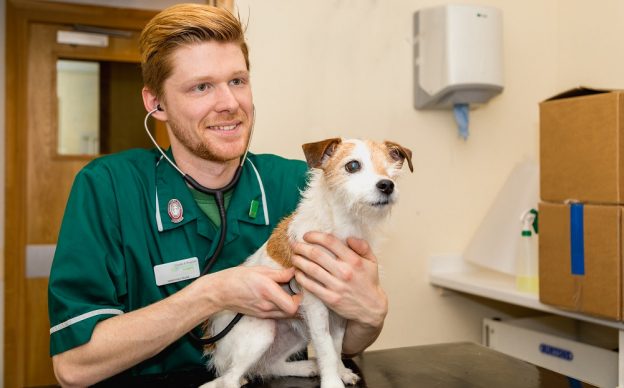Our Level 3 Diploma in Veterinary Nursing is delivered using two different delivery models: day release and block release.
Successful completion of the programme on either model allows you to enter the RCVS Register of VNs, and there is no difference in course content. Both models are also available to study as part of an apprenticeship. The main differences are in college attendance and entry requirements:
College attendance (for both in-person and virtual college attendance)
As a day release student, you would attend college once per week during term times, and be supported by online learning. Outside of college, you would gain practical experience in a veterinary practice, as a paid, employed student. In contrast, as a block release student, you would attend college in two week blocks, four times per year and be supported by online learning. Outside of college, you would gain practical experience in a veterinary practice, either as a non-employed student on work placement, or as a paid, employed student.
Entry requirements*
The main difference between the two models is that our block release programme is open to both employed and non-employed applicants, whereas the day release programme is only open to employed applicants. In addition to the academic entry requirements, for day release you need to:
- be employed in an RCVS approved TP or aTP; a list of these can be found on the RCVS website. The practice must be willing to support you through your qualification and provide you with a clinical coach who will mentor you over the course of your training in practice.
For block release you need to:
- complete a minimum of two weeks work experience in a veterinary environment within the last 12 months (preferably within a small animal first opinion veterinary practice) and be able to provide a satisfactory reference from a veterinary surgeon or registered veterinary nurse supporting your suitability for veterinary nurse training; OR,
- be employed in an RCVS approved TP or aTP that is willing to support you through your qualification.
You can find the full entry requirements for the Level 3 Diploma in Veterinary Nursing on our website.
One model is not better than the other. You should simply choose the model that is more suited to your individual circumstances. You can read more about our block release training here.
What else should I know?
Entry onto our programmes is competitive, therefore, you may wish to read more about how to strengthen your application. In addition, any work experience with animals you can gather will help you meet the entry requirements for a course and strengthen your application. Visit our website for advice and guidance about finding work placements in a veterinary practice.
Do you have any more questions? If so, feel free to connect with us on social media, email us at admin@caw.ac.uk, call us on 01480 422060 or talk to us via web chat.
*Information is correct at the time of publishing; visit our website to keep up-to-date on entry requirements.

